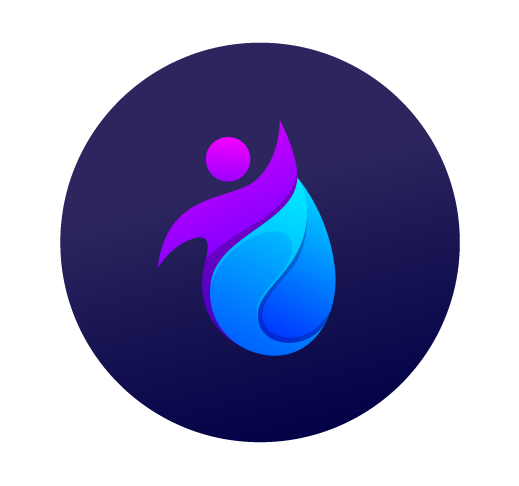Waiting after a job interview can feel like walking a tightrope, balancing your next move. Many candidates wonder what to say—if anything—while navigating post-interview communication.
Mastering effective post-interview communication impacts whether you move forward in the hiring process. Sending the right message, in the right way, shows professionalism and continued interest.
With practical examples and actionable steps, this article explores what employers look for—and what to avoid—after interviews. Let’s demystify the rules of post-interview communication together.
Crafting Timely Messages Signals Professionalism Immediately
Quick, thoughtful follow-ups build trust and show you value the hiring manager’s time. Responding within 24 hours makes your post-interview communication stand out.
Proactive messaging can transform you from just another applicant into a memorable candidate. Promptness signals strong interest and respect, which most hiring professionals appreciate.
Choosing the Right Tool: Email vs. LinkedIn Messaging
Email remains the top choice for post-interview communication. It provides a formal, traceable record of your message. Use your professional email and always double-check the recipient.
LinkedIn messaging can feel more informal but works when the interviewer suggests it. Mention specific details from your interview to personalize the note and avoid generic phrasing.
For example, you might write: “Thanks for discussing your team’s recent project launch. I found your insights helpful.” Small touches reveal true attention and engagement.
Timing Matters: When to Send Your Response
Send your thank-you within a business day. If it’s Friday afternoon, wait until Monday morning—avoid weekends so your message isn’t buried.
Staggered messages, like a thank-you followed by a brief check-in, ensure you don’t seem over-eager. For example, thank immediately, then wait a week before asking about next steps.
This pattern balances persistence and patience, two qualities valued during post-interview communication. Employers remember candidates who respect process without vanishing.
| Channel | When to Use | Formality | Action Step |
|---|---|---|---|
| After every interview | High | Send a tailored thank-you | |
| LinkedIn Message | If invited or no direct email | Medium | Mention a shared topic from interview |
| Phone Call | Rare, if interviewer invites | High | Keep brief and to the point |
| Handwritten Note | C-suite or creative fields | High | Personalize with a detail from interview |
| Text Message | Only if interviewer suggests | Low | Avoid unless specifically instructed |
Personalization Proves You’re More Than a Resume
Sending generic thank-you notes gets you forgotten fast. Add a personal touch to each post-interview communication to stand out as invested and attentive.
Job seekers who reference specific details help interviewers remember their conversations. This creates instant bridges and shows genuine engagement with the team and company mission.
Referencing a Shared Moment Builds Rapport
Remind the interviewer of a topic you discussed that was meaningful, like a shared hobby or relevant project. This reminds them you listened closely and connects on a human level.
- Mention the interviewer’s advice from the meeting, explaining why it resonated and how you’ll use it in your first 90 days if hired.
- Recall a challenge the team is facing and offer a short example of how your previous work solves it—this anchors your value in post-interview communication.
- Highlight a specific company value you admire. Explain how your work style matches that value and share a single-sentence example.
- Thank them for their time sincerely, then tag a unique detail from your discussion: a project, team milestone, or company tradition.
- If multiple people interviewed you, send tailored notes referencing what each person shared—never use the same template for everyone.
These strategies create a lasting impression, proving you were attentive and genuinely interested throughout post-interview communication. Follow up thoughtfully to stay top-of-mind.
Balancing Follow-Up Frequency Without Feeling Overbearing
Strike a balance in post-interview communication by waiting a week before nudging about updates. Polite persistence matters—avoid daily emails or appearing desperate.
Pacing yourself protects your image. If the recruiter shares a timeline, honor it before checking in again to maintain trust.
- Wait until at least the stated timeframe ends before contacting for updates—respect the company’s process and relay continued interest if you do follow up.
- If you’ve interviewed with several people, choose one main contact for your check-ins. Copying everyone can feel aggressive and risks confusion.
- Keep your follow-up brief and gracious. For example: “I’m still very interested and wanted to check on the process. Thank you.”
- If a significant event happens—such as a job offer elsewhere—let the team know respectfully, appreciating their time and consideration before making decisions.
- After one or two gentle reminders without reply, step back gracefully. Continued silence usually means a decision has been made or delayed.
These actions demonstrate confidence and professionalism during post-interview communication while maintaining the interviewer’s respect for your boundaries and maturity.
Polishing Your Written Voice to Leave a Positive Impression
Every word you send represents your personal brand. Using clear language and the right tone communicates confidence and attention to detail after the interview stage.
Avoiding errors and awkward phrasing sets you apart. Simple language puts the focus on your skills and character in post-interview communication.
Proofreading as a Non-Negotiable Step
Typos and grammar mistakes undermine your credibility. Proofread every message carefully before sending, ideally after stepping away for ten minutes and reading with fresh eyes.
Ask a trusted friend to review important notes. Their feedback can catch tone or clarity issues, which may be missed hurriedly after interviews.
Use tools like spell-check as backup, but don’t rely on them alone. Read your post-interview communication aloud to spot common errors and ensure smooth readability for the recipient.
Mirroring the Company’s Style Gains Favor
Adopt a similar level of formality to what you saw during your interview. If your interviewer used first names and casual greetings, match that tone without losing professionalism.
Use the interviewer’s preferred pronouns and avoid slang or emojis. Be confident, yet warm; respect company culture but stick to accepted job market conventions.
For instance, end your post-interview communication with “Best regards” rather than “Cheers” unless you noticed everyone signs off more casually. Subtle cues help build authentic rapport.
Carrying Forward Momentum for Career Growth
Following the do’s and don’ts of post-interview communication can make or break your chances in the job market. Every thoughtful action shows respect and real interest.
Applying these strategies builds relationships and sets a foundation of trust with potential employers. Careful, sincere communication elevates you above other applicants.
Stay clear, prompt, and personal in all your post-interview communication. Each message reinforces your value, ensuring you remain a positive, memorable presence in the hiring process.



